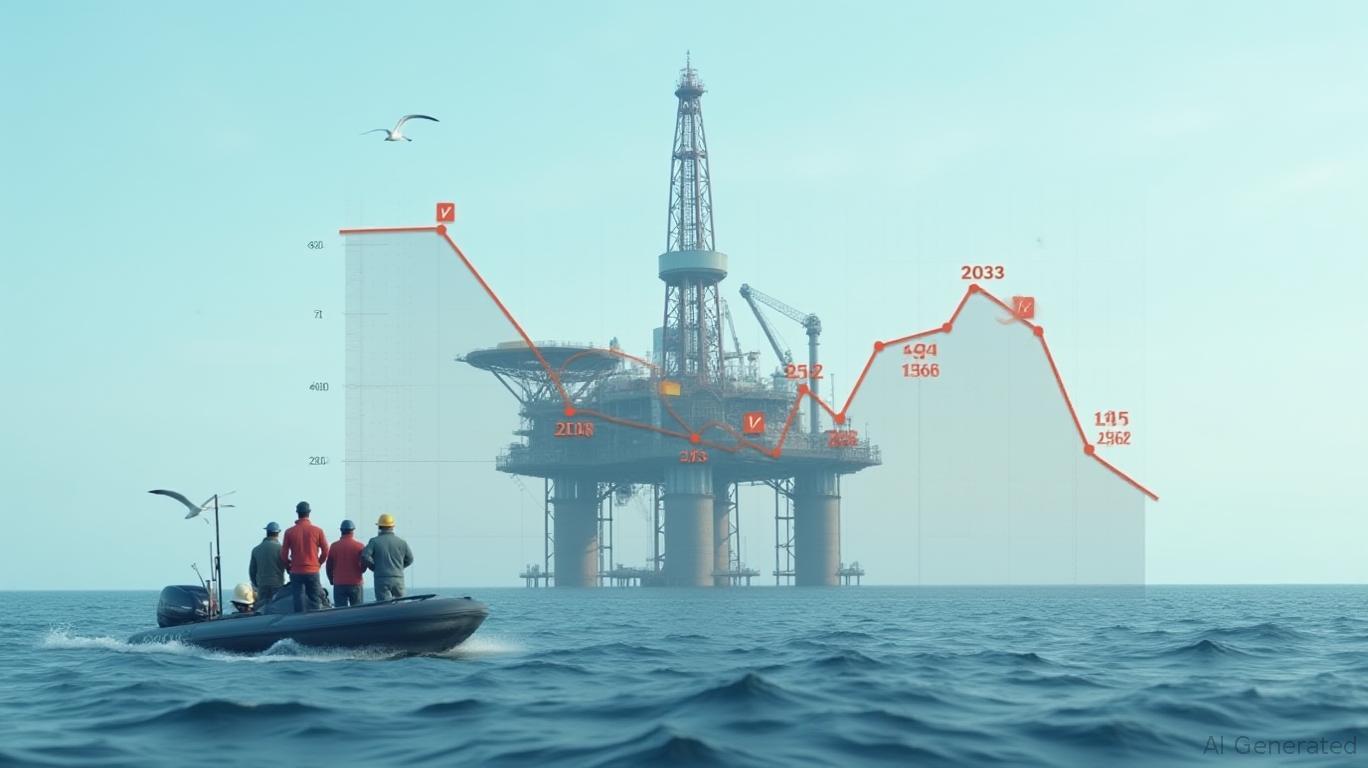Crude Contradictions: Navigating WTI's Volatility in a Slower-Growth World
The oil market is caught in a tug-of-war between Saudi Aramco's bullish optimism on China's long-term demand and a stark reality of oversupply, geopolitical headwinds, and slowing consumption.
has slumped to near three-year lows, testing $60 per barrel, even as the world's largest crude exporter insists China's energy transition will drive sustained demand. This article unpacks the paradox and identifies opportunities in the near-term volatility.
The Demand Dilemma in China
China's oil demand growth has stalled. In 2024, consumption rose just 1.1% to 15.36 million barrels per day (mb/d), dragged down by a 5% year-on-year decline in diesel demand as construction slumps and natural gas trucks displace older diesel fleets. Gasoline demand has also peaked, with electric vehicles (EVs) now accounting for over 50% of new car sales. Even as petrochemical feedstock demand grows 4–6% annually—fueled by new plants producing plastics and polymers for EV batteries and solar panels—this isn't enough to offset transportation fuel declines.
The disconnect between Saudi Aramco's bullish narrative and reality is stark. CEO Amin Nasser insists China's energy transition will “create huge growth” in chemical demand, yet the market sees only stagnation.
OPEC+'s Supply Gambit
OPEC+ is exacerbating the oversupply. After unwinding production cuts in mid-2025, output rose by 411,000 barrels per day (b/d), pushing global supplies to 104.5 mb/d. This, combined with falling Chinese imports (down 3% YTD in 2024) and U.S. sanctions on Russian oil, has sent WTI plummeting. Brent crude, now trading at $66/bbl, is 23% below its 2023 peak.
The cartel's strategy hinges on a bet that China's stimulus will eventually boost demand. But for now, the market is pricing in the present: oversupply, weak near-term demand, and a global economy teetering on recession.
The Contradiction: Why the Disconnect?
Saudi Aramco's optimism focuses on China's structural shift to petrochemicals—a $6 trillion market for plastics and industrial materials. However, the short-term reality is that transportation fuels still dominate oil demand (75% of global use), and China's EV boom and HSR expansion are displacing oil. The gap between long-term potential and immediate weakness is creating a buying opportunity for traders.
Technical Analysis: Support and Resistance Levels
Technical charts reveal key battlegrounds. WTI is testing $62/bbl support (a 2020 low) and $64/bbl (2023 lows). Resistance lies at $68.71 (April 2025 highs) and $72/bbl (psychological threshold). A sustained breach of $72 could trigger a rally toward $78–$80/bbl, where OPEC+ might consider output cuts.
Client sentiment data shows a net-long position in WTI futures, suggesting complacency. This could signal an overbought condition or a contrarian sell signal—but only if support fails.
Tactical Trading Strategy: Buy the Dip, Sell the Rally
Entry Point:
- Long Position: Enter at $62–$64/bbl, with a stop-loss below $60.
- Catalysts to Watch:
- OPEC+ meetings in late June 2025 (potential production cuts?).
- China's Q2 GDP and oil demand data (July release).
- U.S.-China trade talks and sanctions on Russian oil shipments.
Target:
- First Target: $68.71 (April high).
- Aggressive Target: $72–$75 (if OPEC+ cuts are announced).
Exit Strategy:
- Take partial profits at $68.71, and close the remaining position at $72 unless fundamentals improve decisively.
Risks to the Thesis
- OPEC+ Overproduction: If the cartel refuses to cut output despite low prices, oversupply could push WTI below $60.
- Geopolitical Upsets: Escalation in Ukraine or Middle East tensions could spike prices abruptly.
- China's Stimulus Failure: If GDP growth slips below 5%, demand could weaken further.
Conclusion
The oil market is pricing in short-term pain, but Saudi Aramco's bullish stance isn't entirely wrong—it's just ahead of its time. For traders, the near-term volatility offers a high-reward opportunity: buy dips to $62–$64/bbl, ride the bounce to $70+, and exit before the next cycle of OPEC+ decisions. The key is to stay disciplined—this is a tactical trade, not a bet on long-term fundamentals.
Act now, but act with precision.

Comments
No comments yet